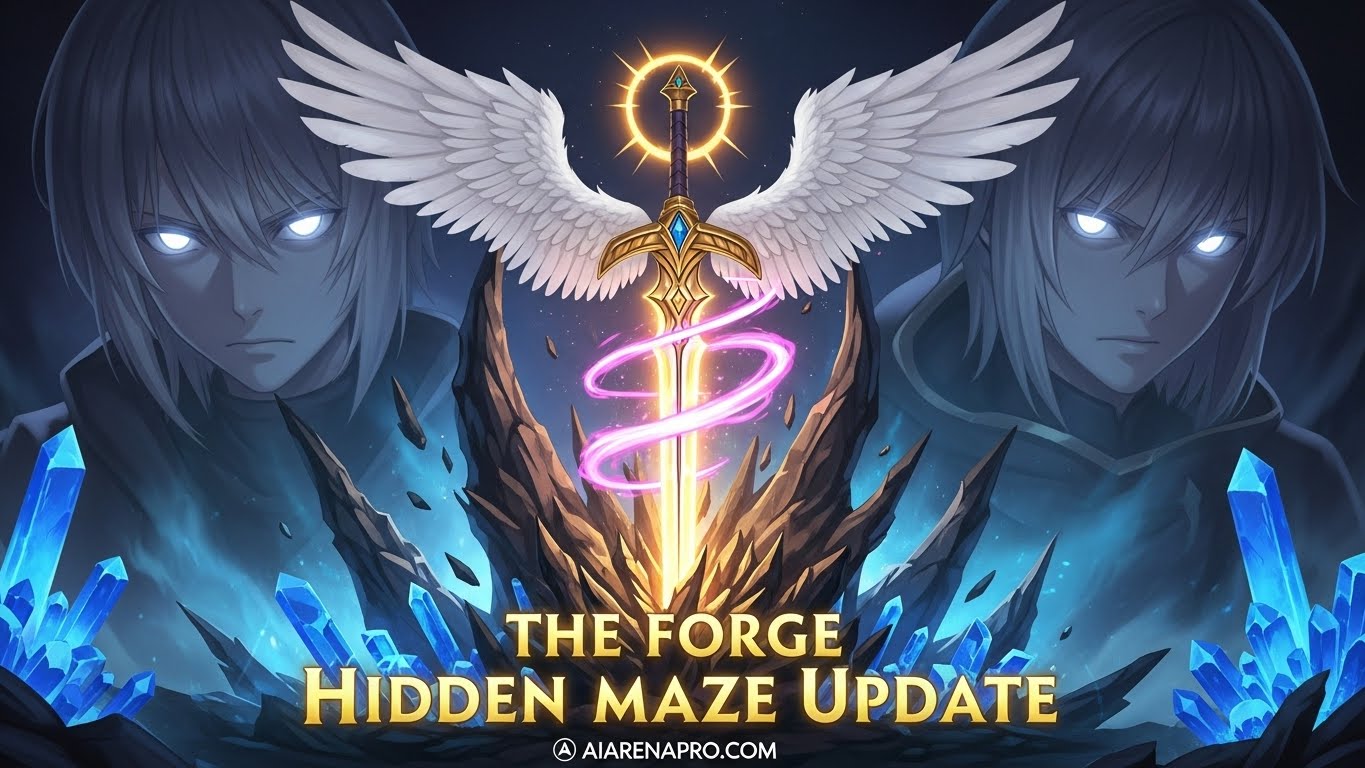
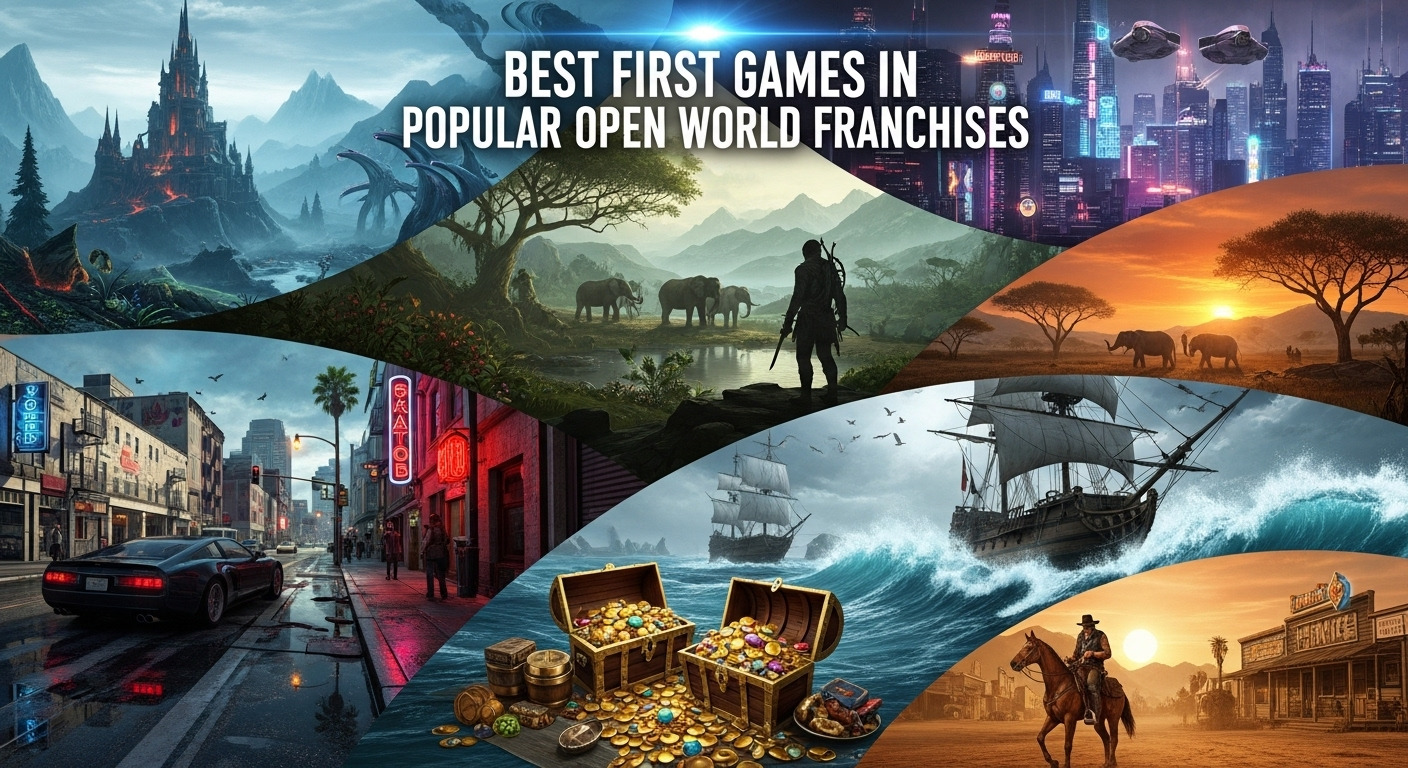
What transforms a single game into a gaming dynasty? The answer lies in examining the bold first entries that launched today’s most beloved open world franchises. Games like Grand Theft Auto III, The Elder Scrolls: Arena, Assassin’s Creed, and The Witcher didn’t just introduce new mechanics they rewrote the rules of what interactive entertainment could achieve.
This comprehensive exploration draws from decades of gaming evolution to reveal why these inaugural titles remain essential experiences, the groundbreaking innovations that defined their identities, and their enduring influence on modern game design in 2026.
| Franchise | Pioneer Game Changing Innovation | Industry Legacy |
|---|---|---|
| Grand Theft Auto III | Three dimensional sandbox freedom | Established modern open world template |
| The Elder Scrolls: Arena | Procedurally generated continent | Set RPG world building standards |
| Assassin’s Creed | Historical parkour integration | Revolutionized stealth action gameplay |
The moment you first experience true freedom in a virtual world is unforgettable. Picture stepping into Liberty City in 2001, when most games still confined players to linear corridors. Suddenly, an entire living metropolis sprawled before you, reactive and explorable. These franchise defining moments don’t merely introduce gameplay systems they fundamentally alter our perception of interactive possibilities.
Successful open world dynasties share a crucial characteristic: their inaugural entries embraced revolutionary risks rather than safe iterations. They didn’t refine existing formulas; they created entirely new paradigms for experiencing digital worlds. Understanding these origins illuminates not only where these franchises stand today, but why certain design philosophies continue to define their evolution.
These trailblazing titles frequently overcame substantial obstacles, similar to how racing franchises evolved from simple arcade concepts to sophisticated simulations. The courage to pursue creative vision despite technical constraints distinguishes legendary franchise founders from conventional sequels.
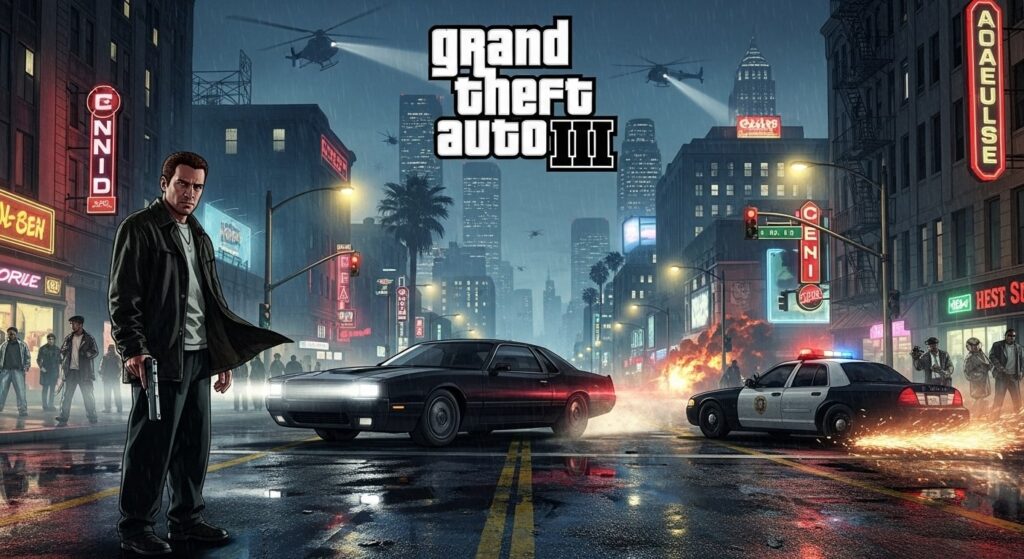
The transition from overhead perspective to three dimensional immersion represented more than a graphics upgrade it was a complete conceptual transformation. Liberty City wasn’t just a game level; it was a digital society with its own rhythms, personalities, and possibilities. The freedom to completely ignore primary objectives in favor of emergent storytelling was unprecedented.
This wasn’t merely about exploring a city it was about inhabiting one. Players could adopt authentic roles within the urban ecosystem: driving taxis for legitimate income, piloting ambulances on mercy missions, or orchestrating elaborate criminal enterprises. These weren’t superficial diversions but fully realized gameplay systems that made Liberty City feel genuinely alive.
The technical accomplishment was extraordinary for its era. Creating a seamless urban environment without loading interruptions on PlayStation 2 hardware required innovative engineering. This technological foundation established expectations that continue to challenge developers decades later, proving that ambitious vision could overcome hardware limitations.
The ripple effects throughout gaming culture were profound. Modern open world conventions from wanted systems to mission variety trace their lineage directly to this groundbreaking entry. Contemporary releases still utilize fundamental design principles pioneered here, demonstrating the enduring relevance of GTA III’s revolutionary approach.
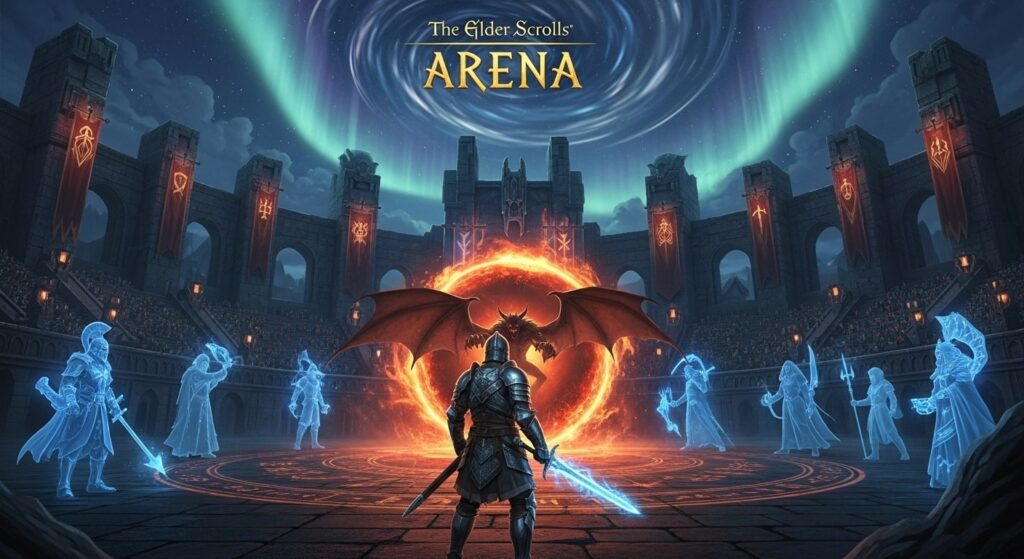
Arena’s audacious scope was breathtaking even by today’s standards. Bethesda created an entire fantasy continent containing hundreds of settlements, diverse provinces, and countless adventure opportunities. While procedural generation meant many locations felt similar, the sheer ambition established expectations for RPG world building that persist today.
The character progression philosophy was revolutionary: improvement through practice rather than arbitrary level assignments. Weapon mastery developed through combat experience, magical abilities strengthened through repeated casting, and skills evolved organically based on player behavior. This approach made every action meaningful and encouraged diverse playstyle experimentation.
Arena’s commitment to player agency established Bethesda’s core identity. Unlike contemporaneous RPGs that enforced narrative progression, Arena permitted complete main quest abandonment in favor of freelance adventuring. This freedom philosophy would eventually culminate in masterpieces like Skyrim, but its roots trace directly to this ambitious first entry.
Despite primitive graphics and dated interfaces, Arena’s fundamental concept remains compelling: providing players with a world and trusting them to create their own narratives. Every subsequent Elder Scrolls release has been an iteration on this foundational principle, refining systems while maintaining the core philosophy of unlimited exploration.
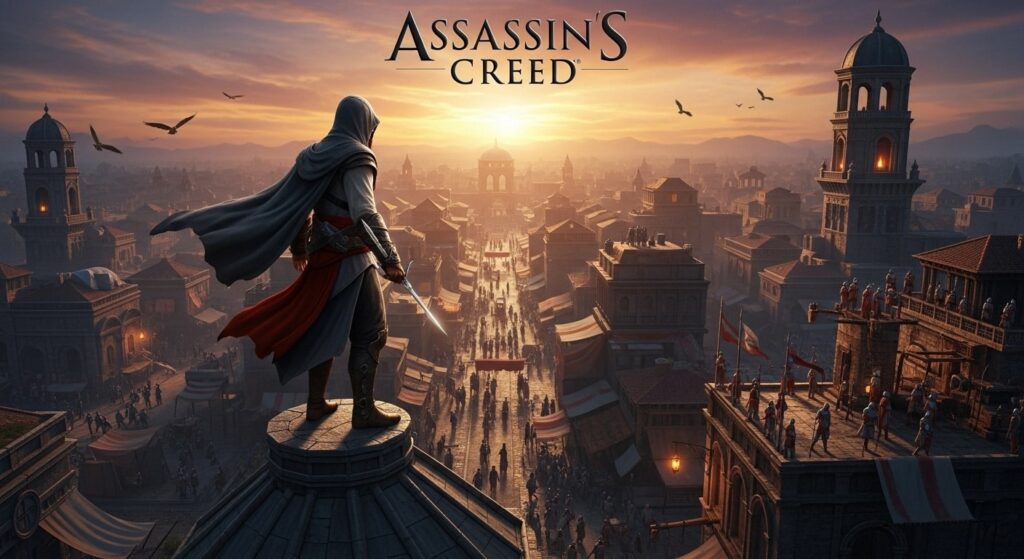
The parkour traversal system represented a paradigm shift in environmental navigation. Rather than marking specific climbing points, Assassin’s Creed made verticality feel natural and intuitive. Any surface that appeared scalable usually was, transforming cities into three dimensional puzzles waiting to be solved through creative movement.
Social stealth mechanics redefined concealment gameplay. Instead of hiding in shadows, players disappeared within crowds, manipulated social situations, and used environmental elements for camouflage. This approach felt authentic to the historical setting while providing tactical depth that traditional stealth mechanics couldn’t match.
The commitment to historical authenticity was unprecedented in action gaming. Medieval Jerusalem, Acre, and Damascus weren’t just backdrops but meticulously researched recreations that served educational purposes alongside entertainment. This blend of historical tourism and interactive adventure established a franchise tradition that continues to educate while entertaining.
While mission variety and combat mechanics showed their age, the fundamental innovations parkour traversal, social stealth, and historical immersion remain franchise hallmarks. Modern entries have refined these systems extensively, but the core concepts established in this first entry continue to define what makes Assassin’s Creed unique among action franchises.
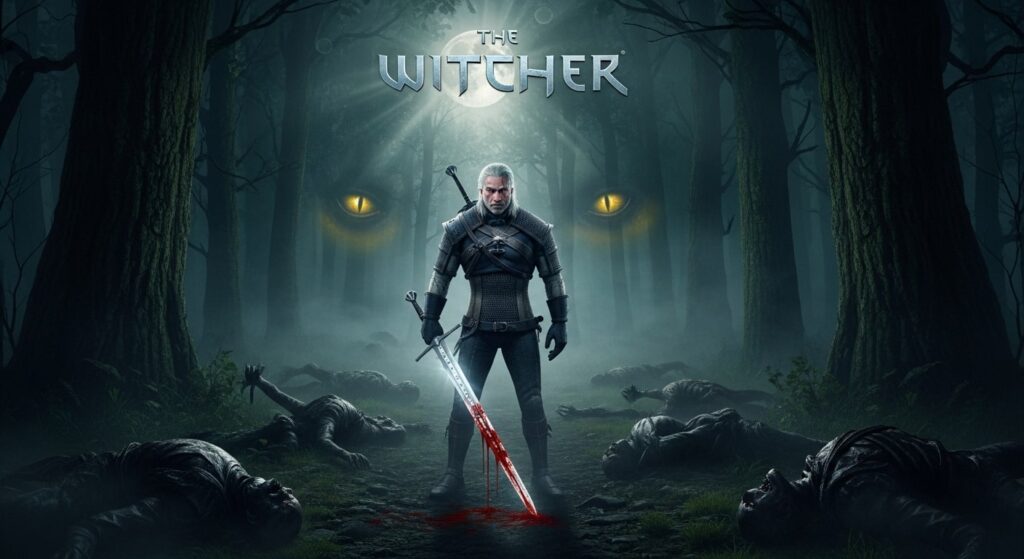
CD Projekt RED’s adaptation of Andrzej Sapkowski’s novels introduced Western audiences to morally complex fantasy that refused simple answers. Every significant decision carried unforeseen consequences that might not surface until dozens of hours later, creating genuine investment in narrative outcomes rather than superficial choice mechanics.
The combat system, while divisive, captured the essence of professional monster hunting. Rhythmic sword combinations, tactical style switching, and preparation through potions and oils made encounters feel strategic rather than reflexive. This emphasis on preparation and knowledge transformed monster encounters into puzzles requiring research and planning.
Moral ambiguity became the franchise’s defining characteristic. Traditional RPG morality systems offered clear good and evil paths; The Witcher presented complex situations where every option carried legitimate justification. This narrative sophistication elevated video game storytelling and established expectations for mature themes in interactive fiction.
Despite technical limitations and controversial elements, The Witcher established narrative depth as its primary innovation. Character development, world building complexity, and moral nuance all originated here, creating the foundation for one of gaming’s most celebrated narrative franchises.

While surface comparisons to Grand Theft Auto were inevitable, Saints Row carved its identity through sheer commitment to entertaining chaos. Where other crime games pursued cinematic seriousness, Volition doubled down on sandbox insanity and player empowerment through customization.
Character creation provided unprecedented personalization for crime games. Instead of predetermined protagonists, players crafted their own gang leaders with extensive customization options. This investment in player identity made narrative progression feel more personal and meaningful than following scripted characters.
The activity design elevated mini games into standalone entertainment. Insurance Fraud transformed self destruction into profit, Drug Trafficking became high speed escort missions, and Mayhem turned property destruction into competitive scoring. These weren’t time filling diversions but fully developed gameplay modes often superior to story missions.
Territory control added strategic depth absent from contemporary crime games. Expanding Saints influence across Stilwater required defending captured areas from rival gangs, creating ongoing investment in geographical progression. This systematic approach to world domination became a franchise staple and influenced numerous subsequent open world designs.
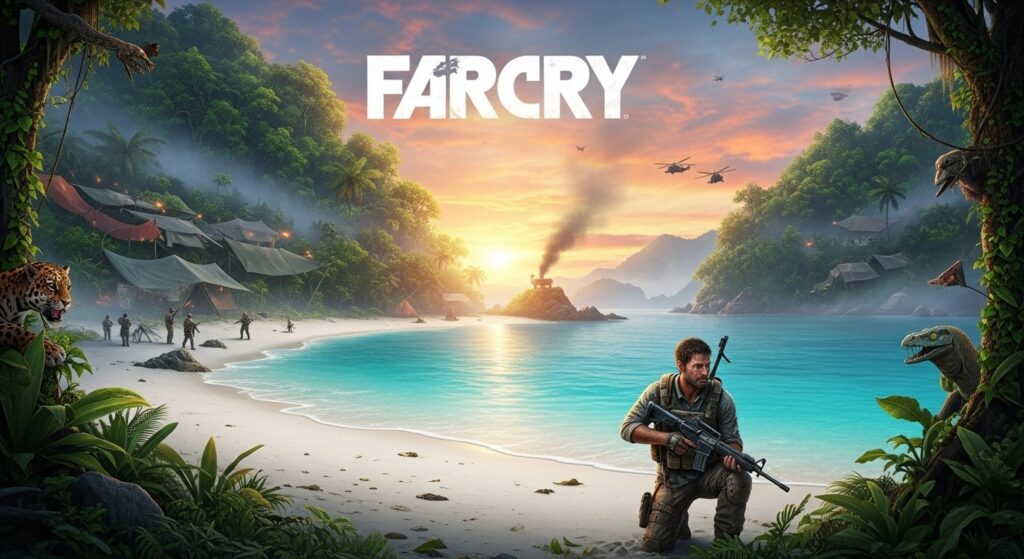
Crytek’s tropical shooter demonstrated that linear games could embrace open ended problem solving without sacrificing narrative focus. Each island section functioned as a tactical sandbox where multiple approaches remained viable, from stealth infiltration to explosive assault.
The artificial intelligence was genuinely reactive and intelligent. Enemies adapted to player tactics, called reinforcements strategically, and searched systematically for hidden threats. This responsive AI transformed every encounter into a dynamic puzzle requiring adaptation and creativity rather than pattern memorization.
Vehicle integration transcended simple transportation. Boats, jeeps, and hang gliders became tactical tools for creative problem solving. Players could assault objectives from unexpected angles, use mounted weapons for area denial, or employ speed for breakthrough tactics. This vehicular creativity would become essential to Far Cry’s identity.
Though Ubisoft would eventually transform Far Cry into a true open world franchise, Crytek’s foundation established the tactical freedom and player creativity that defines the series. Modern entries have expanded these concepts dramatically, but the core principle empowering player ingenuity within beautiful environments originated here.

While Red Dead Revolver preceded it, Redemption established the franchise’s true identity as an authentic Wild West simulation. This wasn’t simply “Grand Theft Auto with horses” it was a complete reimagining of open world gameplay through the lens of frontier life.
Horse companionship transformed traversal into relationship building. Your mount required care, developed trust over time, and responded to your treatment. This emotional connection to transportation was unprecedented in open world games and made every journey across the frontier feel meaningful rather than merely functional.
The Dead Eye targeting system perfectly captured gunslinger fantasy. Slowing time to mark multiple targets created cinematic moments that felt both empowering and authentic to Western fiction. This mechanic was so successful that it’s been refined but never fundamentally altered in subsequent entries.
Random encounters created emergent storytelling that made the world feel genuinely alive. Helping stranded travelers, stopping robberies, or facing unexpected ambushes generated unique narratives that couldn’t be scripted. These spontaneous moments often proved more memorable than structured missions.
The honor system provided meaningful consequences for player behavior. Reputation affected merchant interactions, civilian reactions, and available opportunities. This moral framework influenced gameplay decisions in ways that superficial karma systems couldn’t match, creating authentic investment in character development.
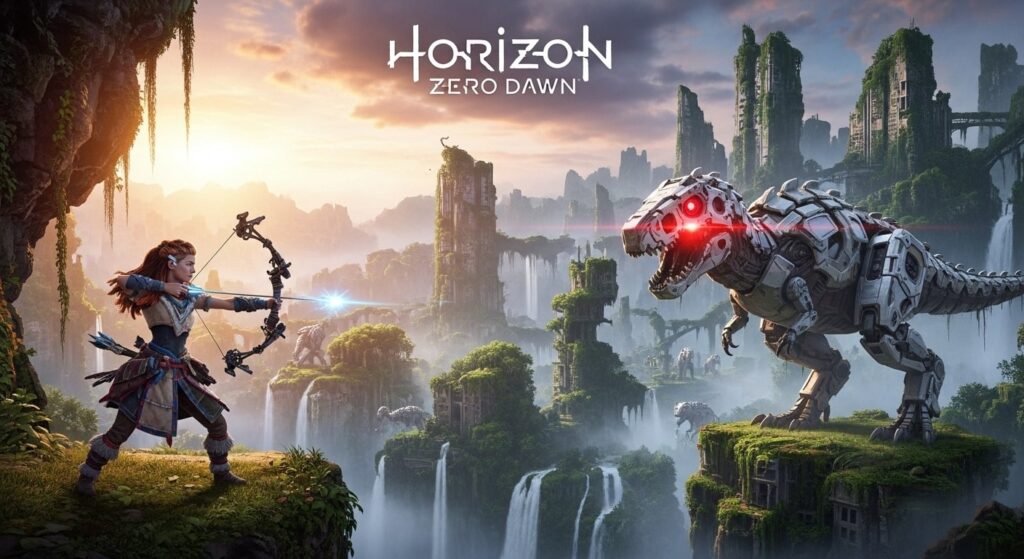
Guerrilla Games’ transition from linear shooters to open world RPGs seemed improbable, yet Horizon Zero Dawn proved that bold creative pivots could yield extraordinary results. The concept robot dinosaurs in a post apocalyptic primitive society could have felt absurd, but masterful execution made it compelling.
Machine combat transcended typical enemy encounters through puzzle like design. Each mechanical creature possessed specific vulnerabilities, component weaknesses, and behavioral patterns requiring study and exploitation. Battles demanded preparation, strategy, and adaptation rather than simple reflexes.
Aloy emerged as an immediately iconic protagonist through authentic character development. Her journey from tribal outcast to world saving hero felt earned through both narrative progression and gameplay mastery. Strong new protagonists are rare in gaming; Guerrilla achieved it through careful character construction and compelling motivation.
The world building created fascinating contrasts between primitive societies and technological ruins. This wasn’t just visual spectacle but narrative foundation the mystery of how this world came to exist drove exploration and discovery. Environmental storytelling through ancient databanks and holographic records made investigation feel rewarding.
Combat mechanics brilliantly merged ranged precision with tactical planning. Elemental weaknesses, component harvesting, and trap utilization provided multiple approaches to every encounter. The rope caster’s ability to restrain massive machines for precise attacks exemplified the tactical depth that elevated combat beyond standard open world fare.
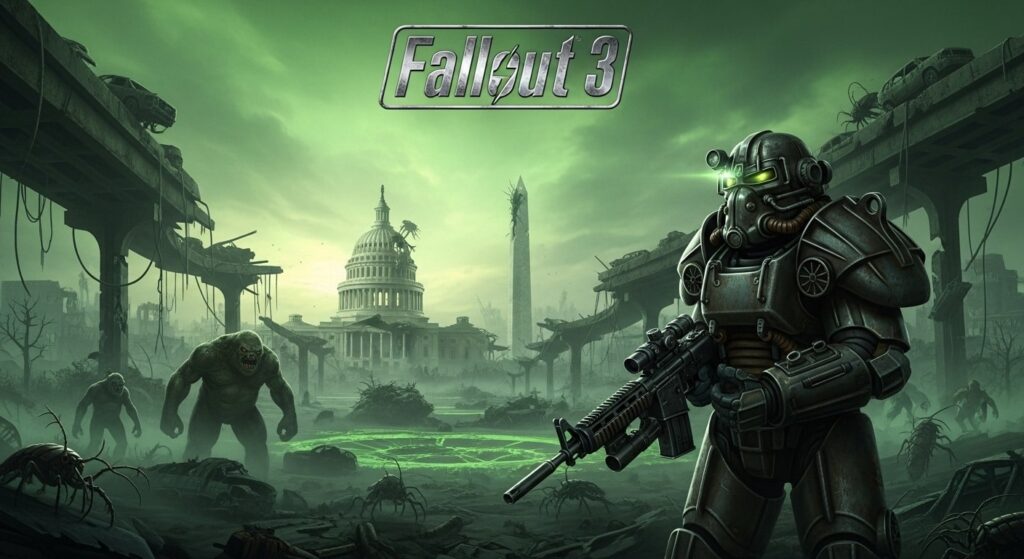
Bethesda’s acquisition of the Fallout license raised concerns about adapting beloved isometric RPGs to first person perspective. Those doubts evaporated upon emerging from Vault 101 into the Capital Wasteland this wasn’t just successful adaptation but complete reinvention that honored the source material.
The V.A.T.S. system brilliantly preserved turn based tactical combat within real time action. This hybrid approach satisfied both traditional RPG fans and new players while creating uniquely satisfying combat moments. The slow motion targeting and explosive results never lost their appeal.
Atmospheric design was unparalleled. The retro futuristic aesthetic, combining 1950s optimism with nuclear devastation, created a unique world identity. Exploring Washington D.C.’s ruins while discovering pre war artifacts generated constant environmental storytelling that made every location meaningful.
Moral choices carried genuine weight through immediate and long term consequences. Early decisions like Megaton’s fate established the stakes perfectly save innocent lives or profit from destruction. These choices, while sometimes stark, created memorable moments that defined individual playthroughs.
Bethesda’s interpretation established modern Fallout conventions while successfully translating classic elements for contemporary audiences. The first person perspective, real time combat, and environmental narrative techniques became franchise standards that continue to evolve.

Just Cause pursued a singular vision: transforming players into action movie protagonists through physics driven chaos. While other games emphasized realism or narrative depth, Avalanche Studios focused on spectacular destruction and creative freedom.
The grappling hook and parachute combination enabled unlimited creativity. These tools weren’t just traversal methods but instruments of improvisation. Players could hijack aircraft mid flight, create elaborate vehicle combinations, or engineer spectacular environmental kills. The robust physics system ensured every action produced entertaining consequences.
San Esperito’s massive scale served the gameplay philosophy perfectly. The enormous world wasn’t impressive for size alone but for its destruction potential. Every military installation, settlement, and infrastructure element became an opportunity for creative chaos. The playground approach transformed the entire island into a canvas for player expression.
The escalating heat system created natural gameplay rhythms. Increased chaos triggered proportional military response, encouraging constant movement and creative problem solving. This simple but effective design kept players engaged through emergent challenge rather than scripted difficulty.

Despite launch controversies regarding visual downgrades, Watch Dogs introduced genuinely innovative mechanics centered on hacking as a core gameplay element. Chicago became an interactive network where infrastructure control enabled creative problem solving and strategic advantages.
The hacking system transformed urban environments into puzzle networks. Traffic lights became weapons, security cameras provided intelligence gathering, and citizen devices offered information access. This systematic approach to city control provided unique power fantasies unavailable in traditional open world games.
Digital trips offered surreal departures from the main experience through psychedelic mini games. These experimental modes from flower bouncing challenges to spider tank rampages demonstrated Ubisoft’s willingness to embrace creative risks within established frameworks.
Invasion multiplayer created paranoid tension through seamless integration. Other players could infiltrate your world undetected, forcing constant vigilance and creating memorable cat and mouse scenarios. This asynchronous multiplayer approach influenced subsequent online integration in open world games.
Analyzing these foundational entries reveals crucial patterns about successful franchise creation. The most enduring first games establish flexible frameworks that accommodate decades of iteration while maintaining core identity. They balance technical innovation with creative vision, pushing boundaries within achievable limitations.
Technical prowess alone doesn’t guarantee success—The Witcher succeeded despite dated graphics through narrative ambition, while Far Cry’s visual excellence required tactical depth for lasting impact. The optimal approach combines technological capability with design innovation, creating experiences that feel both cutting edge and timelessly playable.
These original games’ influence persists through massive technological advancement. Modern entries in these franchises utilize the same fundamental design philosophies established decades ago, despite revolutionary improvements in graphics, processing power, and development resources. The core concepts player freedom, reactive worlds, emergent storytelling remain unchanged.
Contemporary open world design frequently blends elements from multiple franchise pioneers. Modern games might combine Horizon’s tactical combat with Assassin’s Creed’s traversal systems, or integrate Watch Dogs’ hacking with GTA’s urban sandbox mechanics. These first games didn’t just launch franchises; they contributed to a shared vocabulary of open world design principles.
For understanding open world gaming evolution, Grand Theft Auto III remains essential despite its age. The Definitive Edition provides modern accessibility while preserving the revolutionary impact. However, for players seeking experiences that maintain contemporary relevance, Red Dead Redemption or Horizon Zero Dawn offer optimal balances of historical significance and current playability.
Most franchises design later entries as accessible starting points for newcomers. However, experiencing original games enhances appreciation for franchise evolution and design philosophy development. The Witcher series particularly benefits from sequential play due to narrative continuity, while franchises like Assassin’s Creed or Far Cry accommodate any entry order.
Longevity depends on whether innovation stemmed from design philosophy or technical execution. Games that pioneered through systems design (like Red Dead Redemption’s honor mechanics) maintain relevance better than those relying primarily on technological advancement. Visual improvements can be replicated, but foundational design innovations remain unique.
Enduring first entries share common characteristics: distinctive vision that differentiates from competitors, at least one revolutionary mechanic or system, technical competence within scope limitations, and flexible frameworks allowing evolution without fundamental reinvention. The most successful establish adaptable templates that accommodate decades of refinement.
Contemporary innovation faces higher difficulty due to established conventions and refined player expectations. However, games like Horizon Zero Dawn demonstrate that revolutionary impact remains possible through creative combination of familiar elements rather than complete conceptual invention. Modern pioneers focus on polished execution and unique synthesis rather than pure mechanical innovation.
These pioneering entries represent more than gaming history they’re active influences on contemporary design philosophy. Each established principles that continue guiding franchise evolution and inspiring new creative endeavors. The courage required to launch these original visions shouldn’t be underestimated, particularly in an industry that often favors proven formulas over creative risks.
The most remarkable aspect is their continued playability and relevance. Despite dated graphics, antiquated interfaces, and missing quality of life features, these games remain engaging experiences that offer perspectives unavailable in modern entries. They preserve the experimental energy of developers willing to risk failure for transformative success.
For players who discovered these franchises through recent entries, experiencing their origins provides invaluable context for understanding why certain design decisions persist. These aren’t museum pieces but living examples of creative vision translated into interactive entertainment. They remind us that the most lasting innovations often come from combining familiar elements in unprecedented ways rather than abandoning everything that came before.
The legacy of these franchise foundations extends beyond their individual success to their collective influence on gaming culture. They proved that interactive entertainment could transcend simple amusement to become cultural phenomena that define generations of players. In 2026, as new franchises continue emerging despite increasing development costs, these pioneers remind us that bold creative vision remains the key to lasting impact in interactive entertainment.

